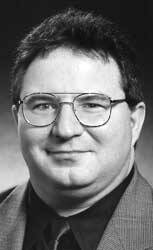With 97 percent of the national vote counted, President Barack Obama led Governor Mitt Romney by 50 percent to 48 percent. According to National Election Pool data analyzed on Nov. 7, the morning after, by Dr. John Lapinski, the top NBC News survey analyst and my esteemed colleague at the University of Pennsylvania, the Catholic vote perfectly mirrored the national vote: 50 percent for Obama to 48 percent for Romney.
Catholic voters shadowing the mass electorate is nothing new. In 2000, for example, the electorate split 49 percent for Vice President Al Gore to 48 percent for Gov. George W. Bush, and Catholics split the same way. Even when one disaggregates all relevant data from 1992 to 2012 in various ways (by race, ethnicity, religious habits), Catholics still emerge as America’s most reliable swing voters.
In each of two Pew surveys released in the month before Election Day 2012, we learned or confirmed two important sets of things about America’s Catholic voters and their intragroup differences. The first set concerns white Catholics; the second concerns Latino Catholics.
Catholic America has its two highly partisan and ideological wings, but the median-voter character of the Catholic electorate is sustained by the white Catholics who self-identify as “moderates.” This subgroup of the white Catholic electorate accounted for about 42 percent of all Catholic voters in 2000 and about 32 percent in 2008.
Still, in 2012, 31 percent of all white Catholic voters self-identified as “moderate,” while 30 percent self-identified as “conservative,” and 11 percent self-identified as “liberal.” By a ratio of 2 to 1, these white Catholic “moderates” prefer “smaller government, fewer services” to “bigger government, more services,” but only 38 percent attend Mass weekly or more; and by roughly 2 to 1 they favor allowing same-sex marriage and oppose making abortion “illegal in most/all cases.” They lean ever more strongly to the Democrats. Obama could not have been elected in 2008, or re-elected this year, without them.
Catholic America is increasingly a Latino Catholic America. The fraction of all Catholic voters who are Latino increased from 13 percent in 2000 to 21 percent in 2008. In 2012, Latino Catholics mirrored all Latinos in partisan leanings, with about 70 percent self-identifying as “Democratic/lean Democratic.” Still, Latino Catholics are at once more churchgoing (45 percent attend Mass weekly or more), more pro-government, more pro-life and less supportive of same-sex marriage than white Catholics.
Latino Catholics are America’s demographic and democratic future. By the time Election Day 2048 rolls around, the nation’s total Latino population will constitute about one in three U.S. residents. Even if the Catholic fraction of that population dips from more than two-thirds to just half, Latino Catholics will be about as big a fraction of the total electorate as white Catholics are today. Fully one fifth of today’s Latino Catholics are ages 18 to 29. While 28 percent of white Catholics who self-identify as “conservative” are age 65 or older, only 15 percent of all Latino Catholics are senior citizens.
As Lapinski has noted, even in a general election season like the one just passed, in which religion “was not discussed much,” voters’ respective religious self-identities make a huge difference to election outcomes.
Since 1980, Republicans at the national level have banked largely on churchgoing white evangelical Christian voters, about three-fourths of whom have voted their way. They were the key to President Bush’s reelection in 2004. But if Republican leaders do not catch up to the Latinos in general, and Latino Catholics in particular, then the Grand Old Party will go the way of the Whigs.
And if the church does not start teaching, preaching and actively promoting “faithful citizenship” in a way that really resonates with Latino Catholics (which means more than just being pro-immigrant or keeping some Latino-serving urban Catholic schools going), then the American Church could go the way of Europe’s.









The cultural divide in our liturgy, with the language barrier its largest element, is nowhere more obvious than in the separate English masses and Spanish masses in my parish. Barely a half century ago, even though we might have misunderstood "et cum spiritu tuo" as my sister did as "April spirit due to all," we would have all attended the same masses and other liturgies together. And that's no small thing.